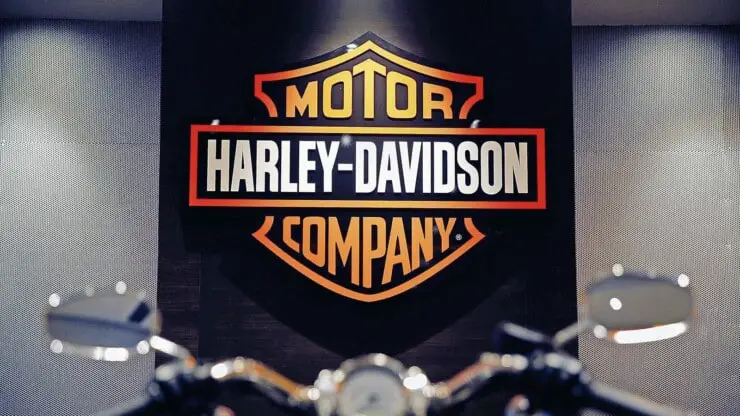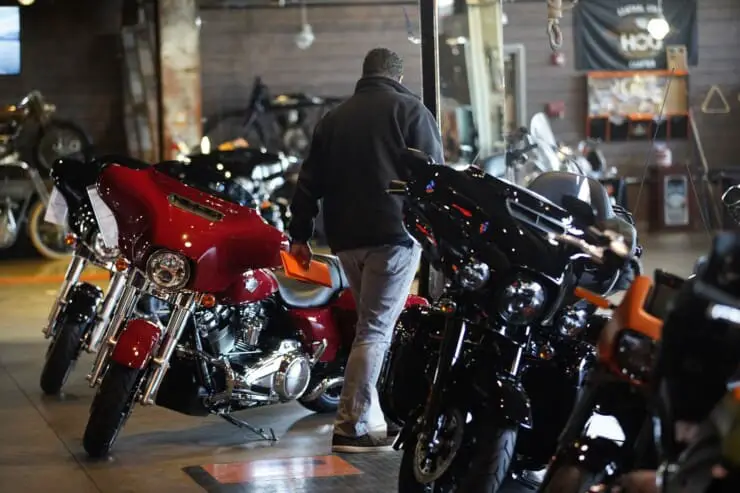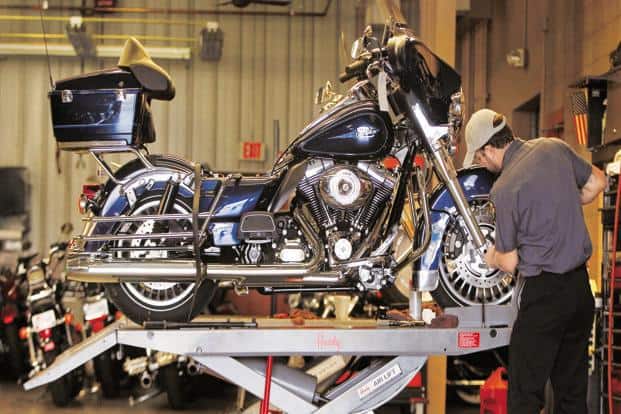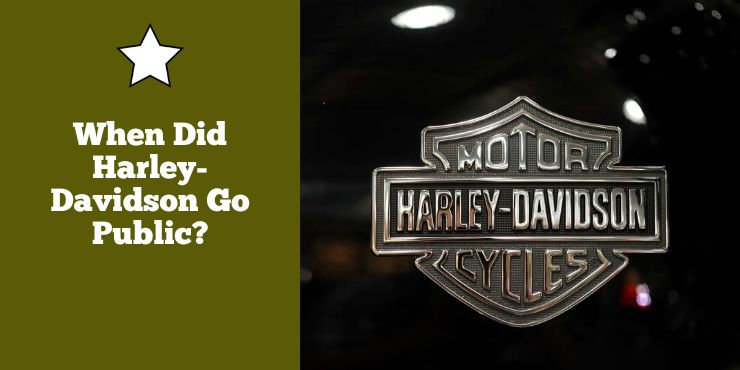Welcome to a journey into the history of one of the most iconic motor companies of all time: Harley-Davidson. Founded over a century ago, Harley-Davidson has been a household name for generations, and its success has been a testament to its resilience through the years.
Harley-Davidson went public in 1986, trading on the New York Stock Exchange under the ticker symbol HOG.
In this article, we will explore the history of the company and the momentous decision to bring it to the public stock market through an Initial Public Offering (IPO). We will investigate the impact of this decision and how it has allowed Harley-Davidson to remain a powerful force in the motor industry. So buckle up and join us as we explore the history of the beloved Harley-Davidson.
History of Harley-Davidson
Harley-Davidson is one of the most iconic motorcycle brands in the world, and it has a rich history that dates back more than 100 years. The company was founded in 1903, and it has since become a symbol of American innovation, power, and freedom. The brand has a rich history and background that every motorcycle enthusiast will find intriguing.
Harley-Davidson was founded in a shed in Milwaukee, Wisconsin in 1903. The founders, William S. Harley and Arthur Davidson were both in their early twenties and had a keen passion for building motorcycles. The two worked in a 10-by-15-foot shed and created a single-cylinder engine and attached it to a bicycle frame. The first motorcycle was completed in 1903, but they immediately started working on a newer and more modern bike.
A new prototype that featured a bigger engine was completed in 1904. This model took part in motorcycle racing held at State Fair Park in Milwaukee. The Harley-Davidson Model No. 1 became the first production bike, and it was released in 1905. The company started producing complete bikes on a limited basis. The same year, the brand produced its first factory-built motorcycle, the Silent Gray Fellow. It featured a 450 cc engine and was capable of clocking speeds up to 60 miles per hour. The bike ended up being a massive success and helped establish Harley-Davidson as a major player in the motorcycle industry.
The company built its first factory on Chestnut Street in Milwaukee, where the brand produced 50 bikes that year. In 1907, the company was officially incorporated. By this time, Arthur’s brothers, Walter Davidson and William Davidson, had also joined the initiative.
Over the next few years, Harley-Davidson continued growing and expanding its product line. In 1915, the company introduced the three-speed transmission, which made the bikes more reliable and easier to ride. In 1917, almost 50 percent of Harley-Davidson’s sales went to the US armed forces for use in World War I. Harley’s involvement in World War I helped establish its reputation for durability and toughness. Moreover, the first service school was opened in Milwaukee to train Army mechanics.

In the 1920s and 1930s, Harley-Davidson continued innovating and expanding its product line. The brand introduced the first V-Twin engine in 1929, which has gone on to become an instant classic. In 1936, the brand introduced the iconic Knucklehead engine, which was popular for its power and reliability.
In the 1940s, Harley-Davidson once again supplied the military with motorcycles, this time for World War II. The brand produced more than 90,000 motorcycles for the military, which helped establish its reputation as the motorcycle of choice for the armed forces. In the 60s and 70s, Harley-Davidson faced numerous challenges, including competition from Japanese motorcycle manufacturers and changing consumer preferences. However, the brand managed to survive the challenges and emerged as a stronger and more focused brand.
In the 80s, Harley-Davidson introduced the Softail line of motorcycles, which featured a comfortable ride and a classic, retro look. Harley also introduced the first Harley-Davidson model with a water-cooled engine, the V-Rod. In the 1990s and 2000s, Harley-Davidson continued to expand its product line and its global reach. The brand introduced the Fat Boy, Road King, and Heritage Softail Classic models among others while also opening new manufacturing facilities in Pennsylvania and Kansas.
Today, Harley-Davidson has become one of the most recognizable brands in the world, with a loyal fan base and a reputation for reliability and quality. Despite the success, Harley continues to innovate and expand its product line while also maintaining its commitment to its heritage and its loyal customers. Whether you are a lifelong Harley-Davidson fan or a newcomer to the brand, there is simply no denying the impact that the iconic motorcycle brand has had on the motorcycle industry and on popular culture as a whole.
Major milestones of Harley-Davidson
Harley-Davidson is a brand that has long been synonymous with the American motorcycle culture for more than a century. Since the company was started in 1903, the brand has achieved numerous major milestones, cementing its place as an iconic brand in the motorcycle industry. Here is a closer look at some of the major milestones of the Harley-Davidson brand –
1903 – Founding of Harley-Davidson
William S. Harley and Arthur Davidson founded Harley-Davidson in Milwaukee, Wisconsin. The brand’s first motorcycle was built in a small shed and had a 116 cc engine attached to a bicycle frame.
1905 – Introduction of the Silent Gray Fellow
Harley-Davidson’s first factory-built motorcycle, the Silent Gray Fellow, was officially unveiled. The motorcycle came powered by a 450 cc engine, and it was capable of speeds up to 60 miles per hour.
1915 – Introduction of the three-speed transmission
Harley-Davidson introduced the three-speed transmission, which made their bikes more reliable and easier to ride.
1929 – Introduction of the V-twin engine
Harley-Davidson officially introduced the V-twin engine, which ended up becoming an instant classic. The V-twin engine was known for its incredible power and reliability and was used in numerous Harley-Davidson models for years to come.
1936 – Introduction of the Knucklehead engine
Harley-Davidson introduced the Knucklehead engine, which was known for its durability and power. The Knucklehead engine was used in several Harley-Davidson models throughout the 1940s and 1950s.
1941 – 1945 – Harley-Davidson supplies the military
During WWII, Harley-Davidson supplied the military with motorcycles, which helped in establishing the company’s reputation for toughness and durability
1957 – Introduction of the Sportster
Harley-Davidson introduced the Sportster, which was a lightweight, high-performance bike that became a fan favorite of motorcycle enthusiasts.
1984 – Introduction of the Softail
Harley-Davidson officially introduced the Softail, which featured a more comfortable ride and a classic, retro look. The Softail became one of the most popular models by Harley-Davidson
1986 – Harley-Davidson goes public
Harley-Davidson became a publicly traded company with its stock getting listed on the New York Stock Exchange.
1991 – Introduction of the Fat Boy
Harley-Davidson introduced the Fat Boy, which was a huge, bold motorcycle that became an icon in the motorcycle world within no time.
1991 – Introduction of the Dyna
Harley-Davidson introduced the Dyna, which was a modern and powerful motorcycle that appealed to younger riders.
2003 – 100th anniversary of Harley-Davidson
Harley-Davidson celebrated its 100th anniversary with a series of events and commemorative merchandise.
2016 – Introduction of the Milwaukee-Eight engine
Harley-Davidson introduced the Milwaukee-Eight engine, which became a powerful, high-performance engine that offered improved fuel efficiency and reduced emissions.
2019 – Harley-Davidson announces electric motorcycle
Harley-Davidson announced the launch of its first electric motorcycle, LiveWire, marking a huge milestone in the brand’s history and a sneak peek for what is to come in the future.
These are some of the milestones in the sea of accomplishments and major events in the history of the iconic motorcycle brand. From its humble beginnings in a small wooden shed in Milwaukee to its status as one of the most recognizable motorcycle brands in the world. Harley-Davidson has certainly come a long way in its century-long, rich history.
With its commitment to innovation, heritage, and quality, it’s no wonder that Harley-Davidson has become an icon in the motorcycle industry and a symbol of American ingenuity and freedom.
When did Harley-Davidson go public?
In 1986, Harley-Davidson made history as it became a publicly traded company, offering its Initial Public Offering (IPO) of stock on the New York Stock Exchange. The brand had been in business for more than 80 years at that point, and the IPO was seen as a huge milestone in the motorcycle company’s history.
The Harley-Davidson IPO was highly anticipated by investors and motorcycle enthusiasts, as the brand had built a strong reputation for quality and performance over the years. The Harley motorcycles had already become an iconic symbol of American culture and freedom, and the IPO was seen as an opportunity for investors to get in on the ground floor for a brand that had a loyal customer base and a strong brand identity.
The IPO was seen as a major success, with Harley-Davidson managing to raise over $90 million in capital and seeing its stock price more than double within the first year of trading. The company’s incredible success continued in the years that followed, with Harley-Davidson expanding its product line and growing its customer base.

While the Harley-Davidson IPO was a major milestone in the rich history of the brand, it was also a reflection of the changing business landscape in the United States in the 80s. The 1980s were a time of deregulation and free-market economics, and many companies were already going public to raise capital and expand their business.
For Harley-Davidson, it was an opportunity to capitalize on the brand’s strong brand identity and loyal customer base. Further, it was also seen as an opportunity to expand its product offerings and reach new markets around the world.
Today, the company continues to innovate and grow while staying true to the values that made it an iconic brand for over a century. Harley-Davidson has become a global brand with a presence in more than 100 centuries. The company’s motorcycles are sold through a network of more than 1,400 dealerships around the world. Further, the company has also diversified its product offerings to include clothing, accessories, and other branded merchandise.
Financial details of Harley-Davidson IPO
Harley-Davidson’s Initial Public Offering (IPO) helped the iconic American motorcycle brand raise capital and expand its business. The IPO was highly anticipated by investors, and the financial details of the IPO were closely watched by analysts and financial experts around the world.
In 1986, Harley-Davidson offered 4.8 million shares of common stock in its IPO at a share price of $11 per share. The offering raised a total of $52.8 million in net proceeds for the company after deducting underwriting fees and other expenses.
The offering was oversubscribed, which meant that the demand for the shares far exceeded the number of shares available for purchase. This allowed Harley-Davidson to raise the offering price for its initial range of $10 to $12 per share and sell more shares than originally planned.
After the IPO, Harley-Davidson’s stock price rapidly rose, reaching a high of $30 per share within a year of the offering. The success of the offering was seen as a reflection of the strength of the brand and the popularity of its motorcycles.
Over the years, Harley-Davidson continued to be a publicly traded company, with its stock traded on the New York Stock Exchange under the ticker symbol “HOG”. The brand has continued to raise capital through secondary stock offerings and other financial transactions, allowing Harley-Davidson to expand its dealer network and grow its business.
Today, Harley-Davidson is a global brand with a market capitalization of more than $7 billion. The company’s financial performance has been quite strong lately, with revenues of more than $4 billion in 2019 and a net income of more than $400 million.
Reasons for Harley-Davidson going public
Harley-Davidson was founded in 1903 and the brand had been privately held for most of its history. In 1986, the company decided to go public with its Initial Public Offering (IPO). The move was highly anticipated, and there were more reasons than one for this decision. There were several reasons why Harley-Davidson decided to take this step, such as –
#1. Raising Capital
One of the major reasons for Harley-Davidson going public was for raising capital. By issuing shares to the public, the brand was able to raise money to fund its growth and expansion plans. This was especially important as the brand was facing increased competition from Japanese motorcycle brands in the 1980s.
#2. Increasing visibility
Going public also gave the brand increased visibility and exposure in the financial markets. The IPO generated a lot of media attention, which helped Harley-Davidson raise awareness of the company and its products. This move, in turn, helped to increase demand for Harley-Davidson motorcycles and accessories.
#3. Enhancing brand image
Going public was also seen as a way to enhance Harley’s brand image. The IPO signaled to investors and customers that the company was a strong and stable business that had a clear strategy for growth and expansion. This helped in building trust and confidence in the brand, which was key to its long-term success.
#4. Attracting top talent
By going public, Harley-Davidson was able to attract top talent to the brand. Being a publicly traded company meant that the company could offer stock options and other equity incentives to its employees, which helped to attract and retain top talent in the industry.
#5. Providing liquidity
Lastly, going public provided liquidity for Harley-Davidson’s existing shareholders. Before the IPO, the company was owned by a small group of private investors. Going public allowed the investors to sell their shares and realize their gains. Moreover, it also allowed new investors to buy in and participate in the company’s growth.

Positive impact on Harley-Davidson after going public
Harley-Davidson’s decision to go public with its Initial Public Offering (IPO) had numerous positive effects on the company and its stakeholders. Here are some of the key benefits of the IPO –
#1. Increased capital
Going public allowed Harley-Davidson to raise significant amounts of capital from the public markets. This provided the company with the funds it needed for investing in new products, expand into new markets, and modernize its manufacturing processes. The IPO further helped to fuel the company’s growth and innovation in the years that followed.
#2. Helped the brand improve its image
Going public helped improve the brand image of Harley-Davidson. As a publicly traded company, the company was subject to more scrutiny from investors, analysts, and the media. This helped reinforce the company’s reputation for quality and innovation and helped to build trust and confidence in the brand among consumers and stakeholders.
#3. Enhanced employee benefits
The IPO allowed Harley-Davidson to offer stock options and other equity incentives to its employees. This helped the brand attract and retain top talent and gave employees a direct stake in the success of the company.
#4. Increased market awareness
The IPO helped generate significant media attention, which helped to raise awareness of the Harley-Davidson brand among consumers and investors. This helped to drive demand for Harley-Davidson motorcycles and accessories. Further, it also increased the brand’s market share in the motorcycle industry.
#5. Improved shareholder liquidity
Going public allowed the company’s private investors to sell their shares and realize their gains. This provided liquidity to the investors and allowed them to reinvent their funds in other opportunities. At the same time, the IPO allowed new investors to buy into the brand and participate in its growth and success.
Negative impact on Harley-Davidson after going public
While the Harley-Davidson IPO had numerous positive effects, there were also a few negative consequences of the brand’s decision to go public. Here are some of the key drawbacks of the Harley-Davidson IPO –
#1. Loss of control
Going public meant that Harley-Davidson’s founders and management team lost some level of control over the company. As a publicly traded company, Harley-Davidson was subject to the oversight of a board of directors and had to comply with various regulations and reporting requirements. This could limit the brand’s flexibility and decision-making power.
#2. Short-term focus
The intense pressure to meet quarterly earnings targets and please shareholders caused Harley-Davidson to focus on short-term gains at the expense of long-term growth and innovation. This limit the company’s ability to invest in new products and technologies and could have harmed the brand’s reputation for quality and innovation over time.
#3. Increased costs
Going public can be an expensive prospect as the company has to pay for legal and accounting fees, underwriting fees, and other costs associated with the IPO. These expenses can be quite significant and may impact the brand’s profitability and cash flow in the short term.
#4. Dilution of ownership
Going public meant the company’s ownership is spread out among a larger number of shareholders. This can dilute the influence of the brand’s founders and management team, and could make it somewhat difficult for the company to pursue its strategic goals and objectives.
#5. Increased scrutiny
As a publicly traded company, Harley-Davidson was subject to greater scrutiny from investors, analysts, and the media. This could put more pressure on the company to successfully deliver strong financial results and maintain its reputation for quality and innovation. It can also increase the risk of negative publicity or litigation if the brand’s performance or business practices were called into question.
FAQs
When was Harley-Davidson founded?
Harley-Davidson was founded in 1903 by William Harley and Arthur Davidson. Since then, the company has become one of the most iconic motorcycle manufacturers in the world and continues to be a leader in the industry.
When did Harley-Davidson first go public?
Harley-Davidson first went public in 1965, becoming the first motorcycle manufacturer to become publicly traded. The company has gone through several ownership changes since then and is now owned by the global investment firm KKR.
What are the benefits of going public?
Going public has several benefits, including access to additional capital, increased brand visibility, and the ability to attract new investors. Going public also provides greater liquidity to shareholders, which can lead to a higher valuation and more efficient capitalization of the company.

